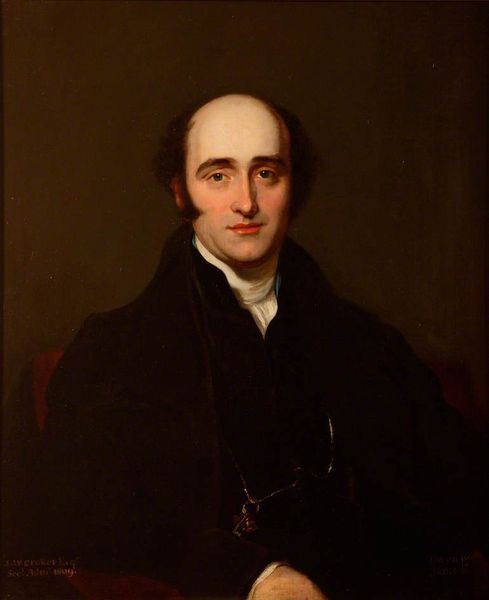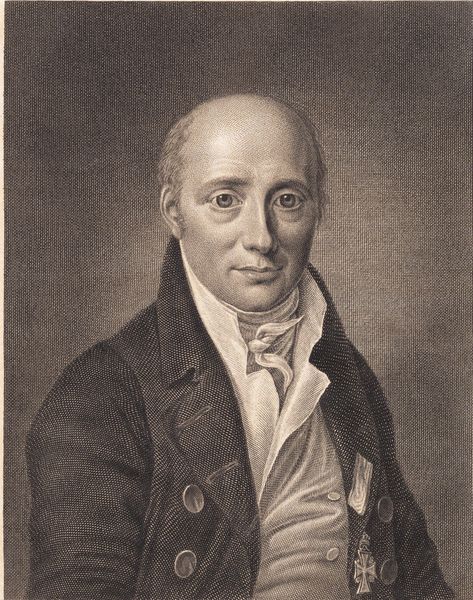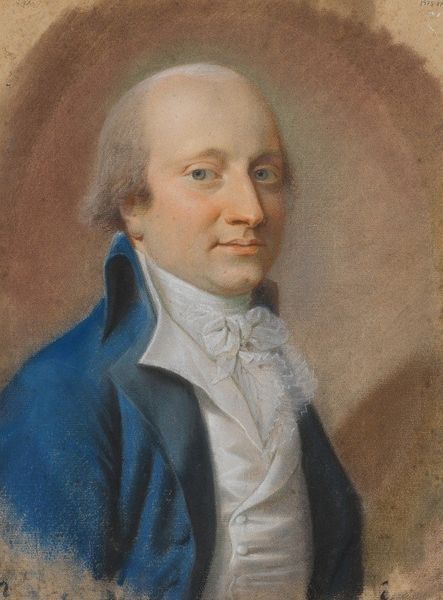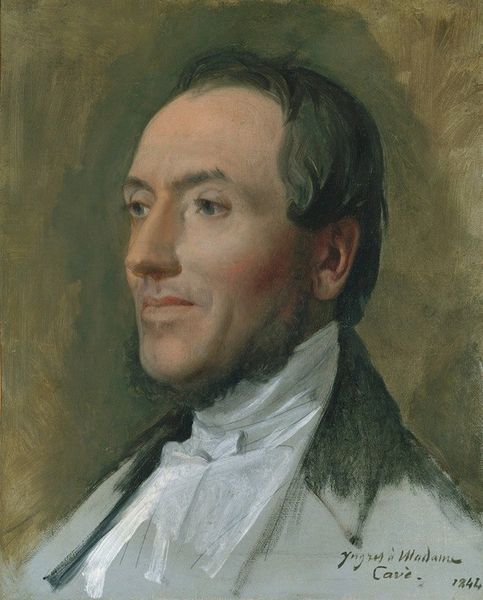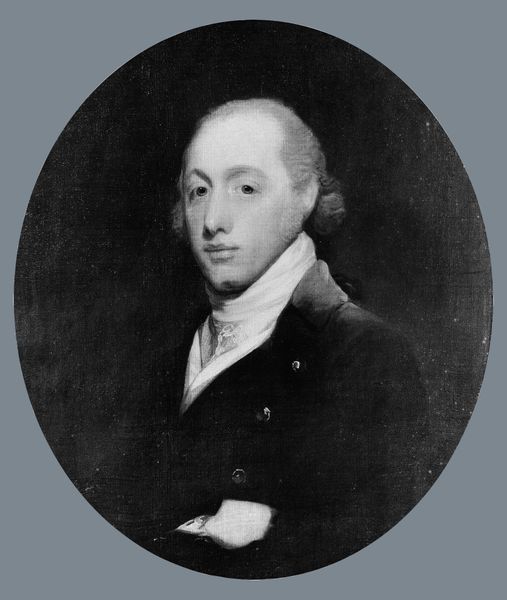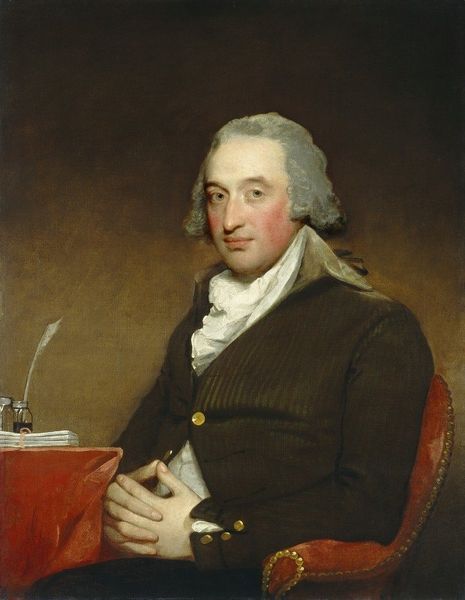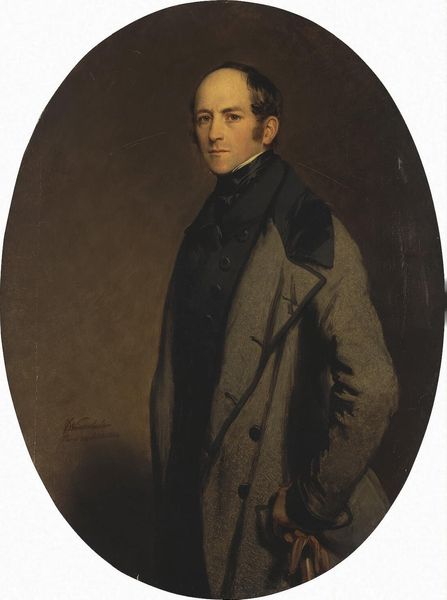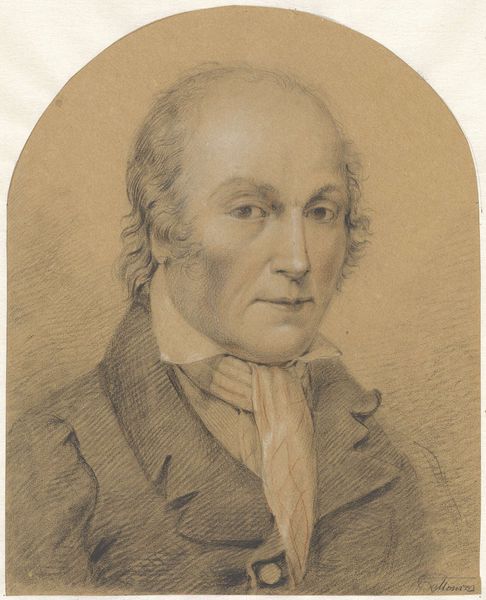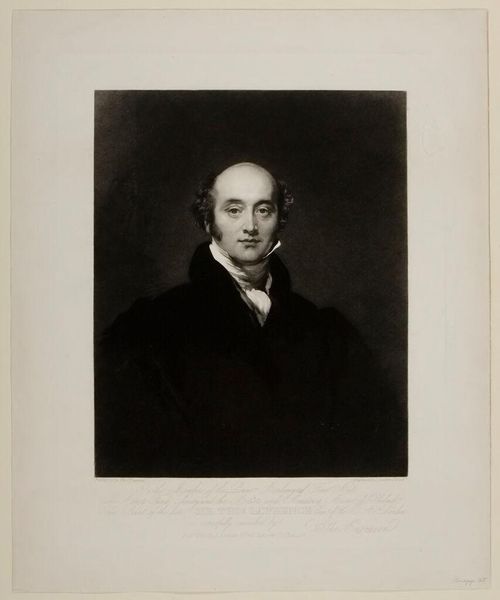
painting, oil-paint
#
portrait
#
figurative
#
painting
#
oil-paint
#
romanticism
#
portrait art
#
realism
Copyright: Public Domain: Artvee
Editor: Here we have Henry Raeburn’s portrait of Alexander Maconochie, painted sometime between 1777 and 1861, using oil paints. I'm immediately drawn to the sitter's gaze; it seems both direct and contemplative. What can you tell me about this work? Curator: The intensity you perceive is quite fascinating, especially when we situate Maconochie within the 19th-century context of penal reform. As a naval officer and later a penal reformer, Maconochie advocated for rehabilitation over retribution in the prison system. The portrait captures a man who challenged the deeply entrenched social structures of his time. How do you think Raeburn's artistic choices reflect, or perhaps even challenge, the dominant ideologies of that era? Editor: I hadn't considered the connection between his profession and the portrait. His somewhat stern expression now reads more as determination. Is there a relationship between his ideas about incarceration and his social status at that time? Curator: Absolutely. Maconochie’s ideas were radical for his time and were often met with resistance from those invested in maintaining the status quo. Consider the composition—a single figure set against a dark background. It draws our attention to the individual. It begs us to think about how power, justice, and societal reform are all manifested within an individual's experience and how such manifestations impact the most vulnerable populations. Do you think Raeburn’s choices give credence to or perhaps subtly undermine the figure’s controversial position? Editor: I suppose emphasizing the individual humanizes him and might sway the viewer towards his reformist ideas, seeing him as a person with a vision rather than simply a radical. Thank you. That has really helped me view this painting from a whole new perspective! Curator: My pleasure. Hopefully, by linking Maconochie's likeness to social reform, we can use his image to further encourage viewers to interrogate contemporary issues of race, class and gender inequalities that persist within our criminal justice system today.
Comments
No comments
Be the first to comment and join the conversation on the ultimate creative platform.
